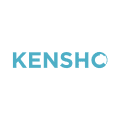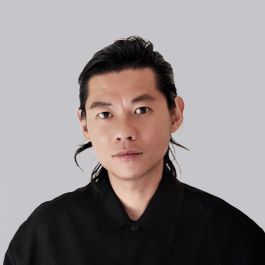Upon entering Kensho’s website, visitors are greeted with a visually arresting animation, a quick snapshot of what the company does and the simple prompt: “Explore.”
Keep scrolling, and more text gradually fades in, revealing further details and use cases for the company’s AI solutions. Finally, visitors are presented with various plans and services, each with a “Free Trial” button.
It’s a compelling and concise user journey from point A to point B. And it’s deceptively simple on the surface. For the UX professionals working behind the scenes, however, these vital first impressions are the result of prototypes, design thinking, granular research, flowcharts and more.
Still, the job doesn’t end with UX designers; their reliance on and collaboration with engineering and design teams is required to deliver a tangible, usable outcome.
Behind the products, services and tools that so many use on a daily basis are interconnected teams who rely on the tug-and-pull of diverse viewpoints and demands to achieve collective success. For UX designers, effective collaboration and communication with product and engineering teams are integral to being an aligned and empathetic partner. These relationships are built on the ability to compromise and understand each other’s strengths and weaknesses.
Below, UX design experts at Kensho, as well as at Northwestern Mutual and Work & Co, shed some light on how they work across teams daily, sync on priorities and cultivate collaborative relationships.
Kensho combines natural language search, graphical user interfaces and secure cloud computing to create a new class of analytics tools.
How do you collaborate with product and engineering on a daily basis? Why is that collaboration necessary?
Collaborating is a mix of working together day to day as well as talking about long-term needs and priorities. At Kensho, we have many different types of engineers, ranging from front-end to back-end, machine learning and AI. It’s easy for us to get out of lockstep because product, design and engineering can be in different stages of researching, developing and creating our capabilities.
That’s why it’s been really important to talk about what we are trying to accomplish and why and establish broader goals.
How do you advance the needs of UX design while also respecting the priorities and considerations of product and engineering?
It’s really clear what our UX needs are as designers because we live and breathe in our research, best practices and strategy, but our partners may not have that same knowledge or perspective. Sharing the knowledge across product and engineering during all stages of the design process makes it easier to get buy-in for the UX design needs. Involving developers and product managers in research share-outs, user interviews and brainstorming can help keep advancing the needs, and usually, they have valuable and diverse perspectives.
Sharing the knowledge across product and engineering during all stages of the design process makes it easier to get buy-in for the UX design needs.”
What tips would you share with fellow UX design leaders to strengthen their collaborative relationship with product and engineering teams?
We started off a bit with design being more of a service, and we had to do some reintroduction to the rest of our company to explain that we could do much more. Additionally, getting to know your product and engineering teams well is pretty important. There are always times when you disagree, and it’s much harder to do that when you don’t feel comfortable with each other. Sometimes that means chatting about your days. Other times that might mean overcommunicating the design team’s goals and intentions.
Northwestern Mutual delivers financial security to millions with life, disability income and long-term care insurance, and investments.
How do you collaborate with product and engineering on a daily basis? Why is that collaboration necessary?
As a content strategist, I think of my role as a bridge between product design and engineering, helping everyone to understand how and why all the parts and pieces exist and can serve a purpose.
I collaborate with our product design and engineering partners to understand their pain points and how we can use content as an integrated part of the process. At Northwestern Mutual, our UX design teams are fully integrated, meaning collaboration between design, product and engineering is frequent and a natural part of our working process. Everybody brings their knowledge to the table so that we can create the best thing together.
How do you advance the needs of UX design while also respecting the priorities and considerations of product and engineering?
Communication is definitely key. We believe impactful UX work is about more than just words and design; it’s about people. We regularly connect with colleagues to ensure alignment so everyone understands each other’s requirements, constraints and opportunities.
Having good partnerships across engineering, product design and content teams allows us to integrate everyone’s skillsets, and support the company’s business goals and our enterprise-level products.
We believe impactful UX work is about more than just words and design; it’s about people.”
What tips would you share with fellow UX design leaders to strengthen their collaborative relationship with product and engineering teams?
Involve people and be willing to teach what you know and are experienced with. Someone who is working in engineering may want to understand the intentionality behind the UX decisions because it gives them context and a better feel for the experience that they’re building.
And as you involve others, make sure to be equally engaged in their work. I think the question that has served me best throughout my career with my cross-functional partners is, “Help me understand.” People want to feel like they’re valued, and by asking this, you give them an opportunity to teach you something they are passionate about.
Work & Co designs and ships digital products, partnering with companies like Google, Epic Games, IKEA, YouTube and other widely recognizable companies.
How do you collaborate with product and engineering on a daily basis? Why is that collaboration necessary?
Design is never done. Even when a design is annotated and produced, the real challenge begins when developers start to bring those ideas to life and the quality assurance team highlights use cases that the design team may not have thought of yet. At Work & Co, to avoid these scenarios, designers begin collaborating with the technology team very early on in the design phase. Project teams are fully dedicated, and the development team is involved from kickoff so that teams are aligned from the start rather than handing off from design to development.
Collaboration and mutual respect make a project more enjoyable and allow for even stronger work. It’s important for designers to hear our developer’s feedback and incorporate it throughout the design phase, which can prevent issues from arising at the end of the process. Each project team also has daily standups, which facilitates consistent communication and sharing between disciplines. Our developers often have the best solutions to execute our ideas. For example, a developer might suggest prototyping certain features to help the team to vet their feasibility.
Designers should welcome and encourage feedback from engineers on designs and can also help the engineers find creative solutions during their work.”
How do you advance the needs of UX design while also respecting the priorities and considerations of product and engineering?
Share the lane, and be ready to go on a detour. As product designers, just as we adapt our design solutions to what users need, we should also adapt our design workflow to the needs of the product and development teams that we work alongside. Designers should welcome and encourage feedback from engineers on designs and can also help the engineers find creative solutions during their work.
Recently, our design team was trying to figure out the background color motion and how we should lay out the elements against it for a project we’re currently working on. During the internal review, a developer on the team jumped in to express concern about the page load and offered to quickly prototype so we could further investigate.
The prototype was so helpful because it allowed the design team to visualize exactly how the page would be impacted, and it brought up edge cases that we would miss by just looking at the design layout. I’ve found this open communication and constant sharing of each respective team’s expertise helpful in narrowing down ideas and making the final experience bulletproof and ready for launch.
What tips would you share with fellow UX design leaders to strengthen their collaborative relationship with product and engineering teams?
Stay curious. Designers and developers can both benefit from each other’s knowledge and expertise. Even if you’re not an expert in the other person’s field, take some time to familiarize yourself with their role and responsibilities. Empathy for each other will help maintain an open conversation and better collaboration. This is also good for younger designers to keep in mind — it’s okay not to know everything. If you have an idea forming, ask the developer to see what they think. Don’t wait; bring them on the ride early, share the sense of ownership and work together.
Be human. Before joining Work & Co, I heard about the company’s respect and care for people. As a new employee, this helped me set an intention to build relationships with my teammates and not just focus on the work. When I got to know my colleagues, I was impressed to see how the company culture was reflected in the way we all worked together. Everyone was friendly, supportive and eager to help each other. This environment helps employees to grow professionally and be more human.










